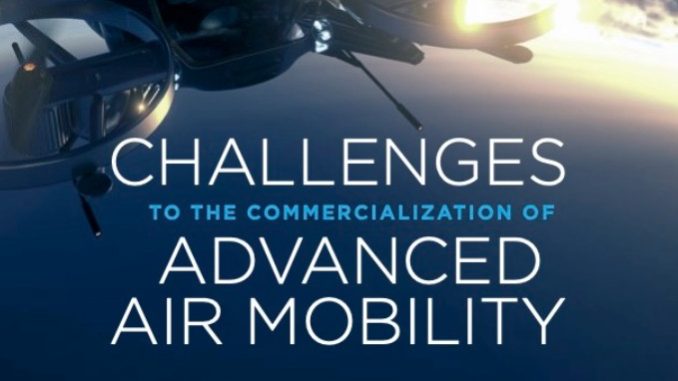
The American Institute of Aeronautics and Astronautics (AIAA) has released recommendations addressing regulatory and other hurdles that could hinder the certification and integration of novel aircraft in the National Airspace System (NAS).
The report, “Challenges to the Commercialization of Advanced Air Mobility,” is written by the AIAA Certification Task Force composed of technical aviation experts with public and private sector experience. The report is available for download here.
The report notes that despite successes in meeting many technological challenges, regulatory and legal hurdles remain. Navigation, type and production certification, and urban traffic management present significant barriers in advanced air mobility becoming a commercial reality. Recommendations include:
Establishing a standing working group of government and stakeholder organizations to create a unified national plan for employing advanced air mobility vehicles, driving new standards to ensure safety and support innovation.
Revisiting current laws and regulations with an eye toward “future proofing,” or ensuring all laws are applicable to both legacy and emerging aircraft systems.
Creating a workforce development plan that sets a foundation of awareness about infrastructure, certification requirements, and NAS management for AAM vehicle startups as well as other professionals and decision makers involved in the development of regulations and operations involving novel aircraft in the National Airspace.
“The aerospace industry is on the cusp of an exciting new era of flight,” says AIAA CEO Clay Mowry. “New aerial vehicle technologies coming online today will enable capabilities we are only just imagining. We urge our lawmakers to work together to prioritize regulations and investments that ensure U.S. leadership in aviation innovation.”
For more information

